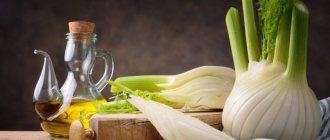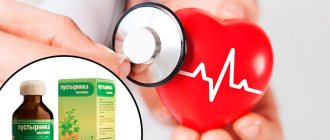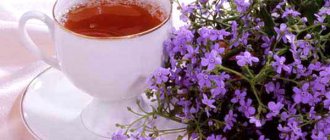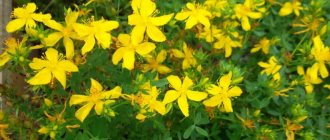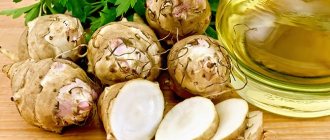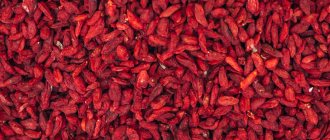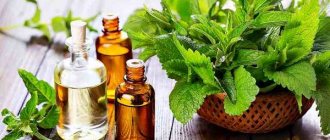What does Echinacea look like and where does it grow?
Medicinal purple coneflower (Echinacea purpurea) is a perennial plant from the Asteraceae family, up to 1 m tall. The shoots of the grass are straight and rough to the touch, the leaves at the surface of the ground are broadly oval and on long petioles, and on the stem they are lanceolate, sessile. In the photo and description of the medicinal echinacea flower, you can see that the plant bears large baskets consisting of purple-pink and reddish-brown buds.
Echinacea blooms from July to September
The eastern part of North America is considered the homeland of Echinacea. In decorative form, the plant is cultivated all over the world.
Important! The medicinal properties of yellow echinacea and other species also deserve attention. But the plant with purple flowers is more widespread.
Where does Echinacea grow in Russia?
Heat-loving echinacea is most often found in the North Caucasus and southwestern regions of Russia. The plant usually chooses sunny areas and fertile soils with moderate moisture.
Chemical composition of Echinacea
The above-ground parts of Echinacea and its roots contain a large amount of beneficial substances. Among the main ones are:
- resins and organic acids;
- glycosides and alkaloids;
- tannins;
- aluminum, potassium and nickel;
- phenolcarboxylic acids;
- manganese, zinc, chlorine and silver;
- phytosterols;
- beryllium, barium and vanadium;
- polysaccharides;
- iron and selenium;
- ascorbic acid;
- essential oils;
- betaine;
- inulin.
Plant-based products are widely used to treat diseases and strengthen weakened immunity.
How is echinacea beneficial for the body and what does it help with?
When used carefully according to prescriptions, the medicinal properties of purple echinacea:
- improve the body's resistance to viruses and infections;
- promote skin regeneration and damage healing;
- improve the condition of the epidermis and have a rejuvenating effect;
- strengthen blood vessels and reduce the level of bad cholesterol;
- cleanse the blood and lymphatic system;
- improve kidney and liver function;
- prevent the development of oncological processes;
- accelerate metabolism and digestion;
- help with fatigue, insomnia and depression;
- reduce fever during colds;
- fight inflammation in the body;
- help with bacterial processes - E. coli, staphylococcus, streptococcus.
The medicinal plant material of purple echinacea can reduce the manifestations of allergies.
Beneficial properties of Echinacea leaves
The herb Echinacea treats anemia - the leaves contain a large amount of iron. The plant contains selenium, which prevents the development of cancer tumors, and antioxidants, which prevent the aging of the body.
Benefits of Echinacea Root
The roots of the plant contain inulin, which takes part in metabolic processes and stimulates the breakdown of fats. Echinacea is useful for cleansing the intestines and liver and for weight loss.
What are the benefits of inflorescences?
Echinacea buds contain an increased amount of essential oils. Inflorescence-based products help with inflammation, stimulate the immune system and have a beneficial effect on the central nervous system.
The benefits of echinacea for a woman's body
The leaves and flowers of Echinacea contain phytosterols that normalize hormonal balance and the monthly cycle. Women can use herbal remedies during painful menstruation and menopause to relieve discomfort.
It is not advisable to use echinacea during pregnancy; it tones the uterine muscles and can cause miscarriage. When breastfeeding, the plant is used only two months after birth and as prescribed by a doctor.
What diseases and what does Echinacea help men with?
The medicinal properties of the perennial flower Echinacea strengthen blood vessels and the heart system in men. The plant reduces the likelihood of strokes and heart attacks, helps maintain strength, endurance and healthy libido longer.
The anti-inflammatory properties of echinacea provide benefits in the treatment of prostatitis and hemorrhoids
Will echinacea help with HPV type 31?
The medicinal effect of the plant against the papilloma virus has not been proven. But at the same time, the beneficial properties of echinacea are used to prevent relapses of the disease. The herb increases immunity and improves metabolic processes in the body, which reduces the risk of recurrence of papillomas.
Does Echinacea Help Boost Immunity?
Echinacea medications enhance immune resistance. It is useful to take the product in the autumn-winter period for preventive purposes. It is recommended to drink decoctions of the plant at the first symptoms of respiratory infections; in this case, ARVI can be dealt with in just a couple of days.
What are the benefits of Echinacea syrup?
Sweet echinacea syrup is used to treat inflammation and allergies, as well as to strengthen the immune system. The drug contains glucose, which improves its taste. Syrup from the plant is good for coughs and sore throats, as it soothes a sore throat and relieves pain.
Indications for the use of Echinacea in homeopathy
The medicinal properties of Echinacea and the herbal benefits of the herb are actively used in homeopathy. Infusions, extracts and syrups are recommended for use:
- for colds and for its prevention;
- to cleanse the liver and kidneys;
- to normalize intestinal function;
- to calm the nervous system;
- for the treatment of bronchitis and pneumonia;
- with cystitis;
- for abscesses and boils;
- in case of poisoning;
- for allergic infections.
Attention! In most cases, Echinacea acts only as an auxiliary drug and requires combination with medications.
Indications for use
Any septic conditions, symptoms of blood poisoning, meningitis, colds, flu, bronchitis, tonsillitis, otitis, burns, boils, pustules, erysipelas and purulent ulcers, gangrene, oral ulcers, gum inflammation, candidiasis, psoriasis, eczema, inflammatory processes of the genitourinary tract, postpartum infections, gonorrhea, trichomoniasis, herpes, hemorrhoids, poisoning, insect bites. Echinacea may be a useful adjuvant in the treatment of cancer, AIDS and chronic fatigue syndrome.
Methods of use and how to use echinacea for medicinal purposes
Traditional medicine indicates numerous ways to use echinacea with doses and rules of use. You can make healthy herbal remedies at home.
Echinacea infusion
A simple water infusion of the plant promotes wound healing, helps with psoriasis and eczema, and accelerates regeneration in case of burns. Prepare the product as follows:
- grind a large spoonful of dry stems and leaves of echinacea;
- pour 500 ml of boiling water into a thermos;
- keep covered overnight and filter in the morning.
Instructions for using Echinacea solution recommend using a lotion and wipe product. Take 80 ml of infusion orally three times a day.
Echinacea decoction
In the form of a decoction, Echinacea is used to improve tone and strengthen the immune system. The recipe looks like this:
- dry leaves and flowers of the plant are crushed in the volume of a small spoon;
- pour 250 ml of hot liquid into the raw material;
- heat in a water bath for 20 minutes over low heat;
- Infuse the product under the lid for another half hour.
Strained echinacea decoction should be consumed 1/3 cup three times a day on an empty stomach.
Echinacea decoction acts as a diuretic and helps with kidney disease
Echinacea extract, powder
Echinacea flower can be used for treatment in the form of a dry extract or powder from dried leaves and buds. The concentrated product has antiviral and anti-inflammatory effects. Echinacea powder should be consumed in small dosages - no more than 2 g once a day. There is no need to drink the product with water.
Ready-made powdered echinacea extract with vitamin C can be purchased at the pharmacy
Echinacea syrup
Sweet syrup based on the plant can be bought at the pharmacy or made yourself. In the latter case, the leaves and flowers are treated in a water bath for about 20 minutes, as when preparing a decoction, but an equal amount of sugar is added to the solution.
Instructions for using echinacea syrup for adults advise using it for allergies, inflammation and diseases of the respiratory system.
Diabetics should not use Echinacea syrup.
Echinacea juice
Concentrated juice can be obtained from fresh leaves and stems of the plant. The raw materials are crushed in a blender or manually ground with a mortar, and then the mass is squeezed through gauze.
Echinacea juice helps with allergic rashes
It is not customary to use plant juice internally. It is used mainly to treat skin lesions, as it accelerates the healing process.
Oil
When used externally, oil based on Echinacea flowers brings benefits. They do it like this:
- 30 g of fresh buds are poured into a glass jar;
- pour unrefined sunflower oil in a ratio of 1:5;
- keep in a dark place for three weeks and filter.
The prepared oil is used to wipe skin lesions and irritations. It can be used for cosmetic purposes to soften the epidermis.
Echinacea oil is used in the treatment of liver and stomach ulcers
Echinacea tea - beneficial properties
An experienced herbalist will tell you that echinacea is an indispensable remedy against colds. In addition, tea with echinacea improves blood quality and enriches the body with beneficial microelements.
Echinacea is recommended by cosmetologists who claim that the processed plant in a hot drink strengthens hair and nail plates. In a word, Echinacea tea is a panacea for many problems.
Let us highlight specific spheres of influence of the drink:
- Improving blood clotting;
- The lymphatic component of the body will be cleansed and return to normal;
- The urinary ducts, along with the kidneys, will be renewed and begin to do their job better;
- The respiratory tract will return to normal, diseases such as bronchitis, ARVI and pneumonia will no longer be a problem;
- A special property of echinacea is the ability to absorb toxins and waste, removing excess from the liver and other organs. This feature is relevant in the post-holiday period, when an abundance of fatty and unhealthy foods unforgivably burdens the body. It is useful to give your body a rest and go on a diet; by including echinacea tea in your diet, you will take the right step towards health. The drink will return the former lightness and freshness of life.
- Tea is recommended during seasonal flu epidemics. The decoction will have a complex effect on the body and will help you endure difficult times of illness with dignity.
We advise you to read: Echinacea for immunity is the best medicine for the human body
For older people, Echinacea comes in handy. The main ingredient will slow down aging and prolong dear youth. But, undoubtedly, tea will not replace traditional medicine. Even such a glorious infusion should be a component in the treatment of diseases. Do not neglect the advice of your doctor under any circumstances.
Echinacea for children and pregnant women
Echinacea is suitable for use even while expecting a baby. The main thing is to know when to stop and not to make the echinacea decoction too strong. Especially in the later stages, a decoction, in moderate dosages, will help make childbirth easier and improve blood flow. A child's health at any age will improve if he is given an echinacea decoction from time to time.
If your child picks up the virus in kindergarten or school, include echinacea in the treatment program, then the symptoms will go away and the child will recover. The taste, specific to children's perception, can be improved by adding honey, berry juice or whole fruits to the tincture.
Echinacea and linden for colds
Echinacea tea with linden is a combination that no cold can resist! Fragrant linden inflorescences have antipyretic, anti-inflammatory and analgesic effects. Both plants have a beneficial effect on the human immune system. To obtain healing tea you need:
- Pour 500 ml of hot boiled water into a thermos.
- Add 1 tbsp. collection of echinacea and linden.
- Leave for 1 hour.
- Filter the infusion.
- Drink the resulting drink one cup 2 times a day.
Linden increases sweating, which helps reduce temperature and increase the body's resistance to infections. It is especially recommended to use this tea recipe for bronchitis - the saponins it contains dilute mucus and help remove it faster. The drink also has a sedative and antispasmodic effect.
Eliminates infections
Echinacea tea helps treat urinary tract infections due to its antiviral and antibacterial effects.
It cleanses the liver, kidneys and lymphatic system with glands. Therefore, you can drink it for sore throat, swollen lymph nodes, prostate problems and tonsillitis.
Antiviral and antioxidant effects make it a good ally in the fight against viruses and herpes. Even vaginal yeast infections can be treated this way.
For immunity
It makes sense to try a recipe with these ingredients:
- 500 milliliters of boiling water;
- 1 dessert spoon of tea leaves.
Preparation
The difference from the previous method is that you need to set aside as much as 5 hours for the echinacea tincture; after this time, the decoction will be ready. In 5 hours, the liquid will be more saturated with useful elements. The drink can be used to combat acute respiratory viral infections and acute respiratory infections by drinking 300 grams of tea per day in 3 doses.
We advise you to read: Thai tea Matum (Bail): description, beneficial properties, how to brew
Natural sedative
In times of stress, there is nothing better than an energy booster to revitalize the body. This drink works great during chronic fatigue syndrome.
You can mix echinacea root with valerian root and make a tincture. Take it whenever you want to relax. In addition, it helps with itching and skin rashes.
When else do you take Echinacea tea?
All the benefits of the drink do not end there. The herbal drink helps in the treatment of other diseases. These include syphilis, purulent fever, hemorrhoids, diphtheria and even cancer.
In addition, echinacea can relieve arthritis pain and muscle inflammation.
Echinacea Tea Recipes
Echinacea is a truly waste-free plant. Beneficial properties are contained in all parts of this perennial herb. You can put not only petals in tea or decoction, but also stems with leaves, and even roots.
This herb can be poured with boiling water, boiled over an open fire or steam bath, drunk hot or, conversely, cooled. Its beneficial qualities do not suffer at all from this; although for different purposes the method of brewing the healing infusion will vary.
You can drink Echinacea tea for no longer than 1 – 2 weeks in a row; after this you need to take a short break.
For a healthy person, the daily portion ranges from 1 to 2 glasses; and during a cold or other infectious disease, the amount of drink can be increased to 3 glasses per day. The exception is children. For them, the maximum daily dose is 1 glass of a weakly brewed drink.
Echinacea decoction to improve immunity
This recipe is especially relevant during the cold season. It requires:
- 1 tablespoon chopped herb;
- and 1 glass of boiling water.
Boil the herb in a water bath for 15 minutes, then remove from heat, let it brew for half an hour and strain. Bring the volume to 200 ml using boiled water. You need to drink this tea before meals, in the morning and evening, 50 ml (1/4 cup). After 10 days you need to take a break from taking it.
Immunomodulatory herbal tea
Echinacea can be used instead of tea. To do this, pour 1 tablespoon of dry herb into a glass of hot boiled water and leave covered for 30 minutes. After the infusion, you need to strain, squeeze out the raw materials and bring the volume with boiled water to 200 ml.
Take warm, 1/3 cup 3 times a day or 1/2 cup 2 times a day after meals.
Honey drink with echinacea
Honey, as you know, is another way to help your body resist colds. Why not combine the most beneficial qualities of these two products for humans?
Make echinacea tea. Pour 1-2 teaspoons of herb with a glass of boiling water and let it brew. The rules for drinking tea with honey also apply to herbal teas. Add honey immediately before drinking tea, and only to the cooled liquid: this will preserve its healing properties.
We advise you to read: Stevia tea: description, beneficial properties and recipes
Drink this tea before meals 2 times a day to support the immune system, speed up recovery from colds, and simply for prevention. But do not forget that such a drink may have individual contraindications.
Echinacea decoction
Decoctions should be prepared in a water bath, this way you can preserve the maximum amount of nutrients. For preparation, they take flowers or leaves of the plant, some mix them.
For 500 ml of water take 1 tbsp. a spoonful of raw materials. The mixture should be kept on the fire for no more than 20 minutes. Drink a quarter glass in the morning and evening. The decoction charges the body with energy and vigor, helps strengthen the immune system.
You can take 2 teaspoons of crushed leaves in 2 glasses of water. Prepare a decoction according to the above recipe. Take the useful product 30 ml three times a day. Helps relieve inflammation, remove excess fluid from the body, reduce swelling, and relieve headaches.
Echinacea tincture
Alcohol tincture is used to prevent viral diseases and strengthen the immune system. At home, you can use any part of the plant; in pharmacology, the roots are used.
- For 500 ml of vodka you need to take 50 g of crushed leaves of a fresh plant mixed with flowers.
- You can take 100 g of dry roots or 25 g of dried leaves.
- The raw materials are infused in alcohol for two weeks.
- All this time the mixture must be kept in a closet or pantry.
- It is recommended to shake the mixture periodically.
Take 20 drops three times a day for a course of 12 days. It is imperative to notify the attending physician about treatment and obtain his permission.
Harvesting buds
As soon as the plant blooms, you need to collect flowers from it. It is best to do this before the bud opens. This is explained by the fact that newly appeared flowers contain the most useful substances.
Harvesting leaves
Young green leaves can be harvested in spring and autumn. If the flower grows in the garden for the first year, then the leaves are harvested only in the fall.
Echinacea leaves and flowers should be dried in the shade. For convenience, the raw materials can be pre-ground. Well-dried leaves and buds are mixed and used to prepare decoctions and infusions.
Proper preparation of rhizomes
The roots are dug up in the fall. Before drying, they are washed well and crushed using pruning shears. They should be dried at a temperature of +40-+60 degrees. This process must be constantly monitored to ensure that the raw materials do not become moldy. Sufficiently dried roots should break well.
It is recommended to store the prepared raw materials in a dark place in an airtight jar.
The use of echinacea in folk medicine
There are many recipes for home medicinal use of echinacea. Several of them are particularly popular.
For liver diseases
The following remedy has a good effect on liver diseases:
- 50 g of fresh or dry echinacea pour 250 ml of unrefined olive oil;
- leave for three weeks in a shaded place under a lid;
- passed through cheesecloth for filtration.
Take only 10 ml of oil three times a day. The product should be used between meals.
For cystitis
A water infusion of Echinacea helps get rid of inflammation of the genitourinary tract. The recipe looks like this:
- 100 g of dried flowers and leaves are poured into 1 liter of hot water;
- leave covered for 8-10 hours;
- passed through cheesecloth for filtration.
Instructions for using echinacea medicine recommend taking an infusion of 100 ml up to five times a day. The course of treatment takes five days; if it was not possible to cope with the inflammation during this time, the therapy is repeated after a week's break.
For a cold
For acute respiratory viral infections and influenza, take echinacea infusion orally. To prepare it you need:
- pour 50 g of dried buds and leaves with a glass of boiling water;
- keep covered for eight hours;
- strain through a sieve and folded cheesecloth.
The infusion is taken half a glass three times a day on an empty stomach. In total, treatment takes ten days.
Advice! Echinacea can be used to gargle for colds - the procedure is carried out up to five times a day.
At high temperature
The medicinal plant helps fight inflammation and reduces fever during colds. For medicinal purposes the following decoction is prepared:
- 30 g of dried flowers are poured into a glass container;
- pour 500 ml of boiling water;
- Boil over low heat for ten minutes under the lid;
- keep covered for five hours.
Drink 125 ml of strained echinacea decoction three times a day until the condition normalizes. If desired, you can add a spoonful of raspberry jam to the medicine.
For sore throat
A decoction of medicinal echinacea helps with sore throat and eliminates bacterial processes. The cooking recipe is as follows:
- a large spoon of dry raw materials is poured with 500 ml of boiling water;
- heat over low heat for half an hour in a water bath;
- keep covered until cool and filter.
Echinacea decoction should be consumed 80 ml three times a day.
Echinacea decoction can be diluted with warm water and used for rinsing.
For hypertension
Purple echinacea helps regulate blood pressure. The following remedy is used in the treatment of hypertension:
- 100 g of dried flowers of the plant are ground to a powder;
- mixed with 300 g of natural honey;
- bring to homogeneity.
You need to take the mixture 5 ml once a day. If desired, you can dilute the product in herbal tea.
For candidiasis
Echinacea has antifungal properties and helps with thrush in women. Prepare the following water infusion:
- 50 g of raw materials are poured with two glasses of boiling water;
- keep closed for five hours;
- filter through cheesecloth.
Soak a tampon in a slightly warm solution and insert it inside the body overnight.
Instructions for using echinacea herb for immunity
The plant can be used not only to treat colds, but also to prevent them. As a preventive measure, it is useful to drink tea on the leaves of the herb:
- 10 g of plant raw materials are brewed with 200 ml of boiling water;
- keep covered for only three minutes;
- strain through a fine sieve.
We recommend reading: Tea with thyme: beneficial properties and contraindications
You need to drink tea twice a day; it is useful to add a little natural honey to the solution. In total, the course of prophylactic administration takes ten days.
External use of Echinacea
Medicinal echinacea is used at home externally to treat irritations and skin inflammations. In particular, it is used:
- in healing baths - five large spoons of dry echinacea leaves are poured into 1 liter of boiling water and left for an hour, and then the strained product is added to the filled container;
- for rubbing and lotions - two large spoons of the herb are poured into 500 ml of boiling water, kept under the lid for two hours and treated with warm medicine to the affected areas.
Echinacea accelerates the healing of damage and prevents the development of bacterial processes.
How to prepare echinacea for tea
For medicinal purposes, Echinacea can be prepared in the form of tincture, extract, or dry collection. The plant blooms from mid-summer until almost mid-autumn. If you harvest the root for an alcohol tincture, this should be done in late autumn or early spring. The plant must be at least two years old. Cooking order:
- Dig up and separate the root system of the plant.
- Wash and cut it into pieces.
- Dry until brittle (best in a dryer at 40-60 degrees to prevent molding).
- Pour into a glass jar, fill with medical alcohol and place in a dark place for 2 weeks.
- Filter the tincture.
- This product can be stored for up to 5 years.
You can start collecting leaves and flowers when the inflorescences have not yet fully opened. Faded echinacea has already lost its usefulness. The collected leaves and inflorescences should be dried in a dark place until completely dry. Pour the dry collection into a cloth bag or glass storage container. The shelf life is no more than six months.
Echinacea tea to boost immunity
This tea is useful to include in the treatment of colds. To brew the drink, you need to add half a teaspoon of dry collection to 1 glass of hot boiled water. The tea should brew within a few minutes and should be drunk warm, not hot.
You can diversify the vitamin composition of an echinacea drink by adding rose hips. You can also drink honey with this tea, but do not put it directly into hot tea.
Another brewing option:
- Pour 0.5 liters of boiling water into a thermos.
- Add 1 tbsp. inflorescences.
- Leave for several hours.
- You need to drink the product within 24 hours while its effect lasts.
Tea can be prepared from fresh flowers, in which case one inflorescence is enough for a glass of boiling water. You should not brew more raw materials than you need - echinacea works best in small quantities. The optimal dosage of tea for medicinal purposes: 100 ml 3 times a day.
Children over 3 years old can drink 50 ml of tea. The effect will be more noticeable if you drink the drink 30 minutes before a meal. You can drink this tea for 1-2 weeks, maximum 2 months in cases of very weakened immunity. It is necessary to take breaks between courses so that the body can recover on its own.
Echinacea leaf tea during pregnancy
There is still debate about drinking echinacea tea during pregnancy. Taking immunomodulatory drugs is undesirable during pregnancy, especially in the first trimester.
During pregnancy, a woman's immunity decreases to prevent fetal rejection or miscarriage. However, drinking small doses of medicinal herbal teas may not significantly affect fetal development.
If you still want to add tea to your diet, you should consult your doctor before doing so. In any case, you can drink the drink no longer than 7-10 days, 50 ml at a time. Alcohol tincture of Echinacea is definitely contraindicated during pregnancy.
Echinacea and linden for colds
Echinacea tea with linden is a combination that no cold can resist! Fragrant linden inflorescences have antipyretic, anti-inflammatory and analgesic effects. Both plants have a beneficial effect on the human immune system. To obtain healing tea you need:
- Pour 500 ml of hot boiled water into a thermos.
- Add 1 tbsp. collection of echinacea and linden.
- Leave for 1 hour.
- Filter the infusion.
- Drink the resulting drink one cup 2 times a day.
Linden increases sweating, which helps reduce temperature and increase the body's resistance to infections. It is especially recommended to use this tea recipe for bronchitis - the saponins it contains dilute mucus and help remove it faster. The drink also has a sedative and antispasmodic effect.
Echinacea tincture with tea
An equally effective result is obtained by using echinacea infusion. A plant immunomodulator allows the body to regenerate on its own and become more active in the fight against infections, viruses, and inflammatory processes without medications. Recipe for the infusion:
- Place a saucepan with 0.5 liters of water over medium heat and bring to a boil.
- Add 2 tbsp. dry inflorescences.
- Boil for 10 minutes.
- Remove from heat and place in a warm place for several hours.
- Warm infusion can be drunk half a glass 3 times a day.
For taste, you can add honey, sugar or berry juice. The infusion will be effective within 1-2 days; there is no point in storing it for a long time, since the beneficial substances evaporate.
Application in cosmetology
Echinacea soothes irritated skin, helps normalize oiliness and helps get rid of acne. For problematic epidermis, the following mask is beneficial:
- 5 ml of echinacea infusion is mixed with an equal amount of flower honey;
- add a large spoon of rye flour;
- Stir the mixture and apply to the face for ten minutes.
It is recommended to use the product twice a week. The potential harm from echinacea extracts in cosmetics is that the herb, in overdose, can cause rashes and redness.
Uses of Echinacea for hair
Infusions and decoctions of the root and leaves of Echinacea are used to rinse hair. They can be used in pure form or in combination with chamomile, string or fresh lemon juice to increase smoothness and volume.
The healing properties of Echinacea help with dandruff. In this case, the flowers and leaves are crushed to a paste and mixed with chicken yolk, after which they are applied to the root area of the head for half an hour.
Instructions for use of Echinacea purpurea
Preparations based on Echinacea purpurea are available in the form of tablets, solutions, tinctures, ampoules, lozenges, and oils. Any option acts as a medicine, but under different circumstances it is more convenient to use either in liquid or solid form.
The dosage and regimen of taking echinacea depends not so much on the type of drug, but on the concentration of active substances, the age of the patient and the nature of the disease.
Pills
On the basis of the plant, immunomodulators are produced in the form of tablets: Immunal, Estifan. This form is prescribed to adults and children over 12 years of age. The usual dose is 1 tablet 3-4 times a day. In practice, the dosage is calculated individually.
Echinacea-Ratiopharm – absorbable tablets. They are taken for sore throats, colds, and sore throats. The medicine acts on the source of inflammation. Take up to 4 pieces per day.
Echinacea P is a dietary supplement, not a medicinal drug. The instructions for it do not include descriptions of contraindications, which can be dangerous.
Tincture
A more popular form of the drug, as it is easier to dose. The tincture is made from the roots of the plant; it contains alcohol, so it is not used in the treatment of children. Instructions for use are as follows:
- in the first 3 days of illness, drink 30 drops once a day, half an hour before meals;
- then the dose is increased to 60 drops. The drug is taken in 3 doses;
- for children over 12, the tincture is diluted in a ratio of 1:2 and given 10 drops 3 times a day;
- for rubbing, 15 ml of medication is diluted with 100 ml of water or saline solution.
Echinacea tincture may contain other ingredients. The basis of Echinacea-Vilar is the juice of the perennial.
Combination drugs
Multi-component medicines containing, in addition to echinacea, other ingredients. The most famous include the Saan-Sol Echinacea and Baby-Prop multivitamin complexes for children. Also, to stimulate the immune system, it is recommended to use dietary supplements based on extracts and extracts from the plant.
Syrup
The basic component is the juice of the plant. The syrup is enriched with vitamins B and C. It is prescribed for colds and throat diseases. This form is preferable to offer to children. Adults drink 2-3 teaspoons three times a day. Children - 1 teaspoon in the morning. The course lasts 10 days.
Homeopathic remedies
Prairie flower extract for severe diseases such as abscesses, furunculosis, toxic syndromes is prescribed as an intramuscular injection. The injection solution acts faster because it enters directly into the blood, bypassing the stage of digestion and absorption through the mucous membranes. The Echinacea preparation activates both general and local immunity, since it acts on the source of inflammation. The standard dose is 1 ampoule per day. The duration of the course is determined by the doctor.
Important! Injections are prescribed to adults and young patients.
Herbal collection
The herb is offered in the pharmacy in the form of sachets - in bulk or in the form of filter bags. The sachet may contain only echinacea or a combination of several medicinal herbs. This form is very convenient for brewing tea or cold infusions of Echinacea purpurea at home. Adults brew 1 sachet per glass, children are given 50 ml of this decoction once a day.
Oil
Echinacea oil is used for both internal and external use. It is used to treat burns, wounds, including purulent ones, bite marks, and trophic ulcers. The composition is excellent for bedsores.
Oil is used to lubricate inflamed tonsils for sore throats and colds. The procedure is also performed for laryngitis and damage to the vocal cords. After lubrication, part of the substance flows down the throat and forms a protective softening film.
Echinacea oil is taken internally, 5 ml twice a day. The course lasts 10–14 days, after which they take a break for 2 weeks and repeat if necessary.
Contraindications to the use of Echinacea and side effects
The medicinal properties and contraindications of the Echinacea plant are closely related to each other. You should not use herbal products:
- for tuberculosis and sarcoidosis;
- with leukemia;
- during pregnancy;
- with multiple sclerosis;
- for individual allergies;
- with severe hypertension;
- with exacerbation of pancreatitis and peptic ulcer.
Oncology is not a contraindication for Echinacea, unless we are talking about blood cancer. However, the plant can be consumed only with the permission of a doctor and after chemotherapy. For tumors in the development stage, it is better to avoid using medicinal herbs.
Best before date
24 months
Vitamins with similar effects
- Maxiflorum with Valerian (Oral tablets)
- Incas gold. Men's Formula (Oral Tablets)
- Encaps (Capsule)
- Influence (Capsule)
- Set of herbs No. 4 (Oral tablets)
- Narosan Orange (Oral liquid)
- Marine calcium for children with iron (Oral tablets)
- Marine calcium for children with manganese (Oral tablets)
- Pankramin (Powder for oral solution)
- Pantohematogen "Altamar™-1" (Capsule)
Description of the vitamin Echinacea Root is intended for informational purposes only. Before starting to use any drug, it is recommended to consult a doctor and read the instructions for use. For more complete information, please refer to the manufacturer's instructions. Do not self-medicate; EUROLAB is not responsible for the consequences caused by the use of information posted on the portal. Any information on the project does not replace consultation with a specialist and cannot be a guarantee of the positive effect of the drug you use. The opinions of EUROLAB portal users may not coincide with the opinions of the site Administration.
Are you interested in Vitamin Echinacea Root? Do you want to know more detailed information or do you need a doctor's examination? Or do you need an inspection? You can make an appointment with a doctor - the Euro lab is always at your service! The best doctors will examine you, advise you, provide the necessary assistance and make a diagnosis. You can also call a doctor at home . Euro lab clinic is open for you around the clock.
Attention! The information presented in the vitamins and dietary supplements section is intended for informational purposes and should not be a basis for self-medication. Some of the drugs have a number of contraindications. Patients need to consult a specialist!
If you are interested in any other vitamins, vitamin-mineral complexes or dietary supplements, their descriptions and instructions for use, their analogues, information about the composition and form of release, indications for use and side effects, methods of use, dosages and contraindications, notes about the prescription of the drug for children, newborns and pregnant women, price and consumer reviews, or you have any other questions and suggestions - write to us, we will definitely try to help you.
Interaction with other drugs
The health benefits and harms of Echinacea depend on the combination of the plant with other pharmaceutical and natural remedies. The herb may cause side effects when consumed:
- with medications containing caffeine;
- with estrogen and cyclosporine;
- with lovastatin and clarithromycin;
- with indinavir and triazolam.
Echinacea should not be combined with medications that are metabolized by the liver. The plant is not taken simultaneously with immunosuppressants, since the effectiveness of the latter is reduced.
Echinacea is taken carefully with tonic herbs - nervous overexcitation may develop
Collection and preparation of Echinacea raw materials
In order for the plant to fully reveal its beneficial qualities, it is necessary to properly harvest and dry Echinacea. Grass should be collected exclusively in areas with a clean environment and without factories or highways located nearby.
What to collect from Echinacea for treatment
Both above-ground and underground parts of the grass have beneficial properties. You can collect the roots of the plant, its leaves, stems and inflorescences for medicinal purposes.
When to collect echinacea for medicine, for drying for the winter
The optimal time for collecting echinacea is the period of active flowering from mid-July. The roots are dug up in the fall at the end of the growing season, not earlier than October.
How to collect and dry Echinacea officinalis
To harvest leaves and flowers, the plant is cut at a height of about 35 cm from the ground. It is best to do this early in the morning. Echinacea roots are carefully dug out of the soil on a dry but cool day.
The collected raw materials are thoroughly washed from soil residues and dust, sorted and laid out to dry outside in the shade or in a warm room. The roots and large leaves can be pre-cut with a knife. It is allowed to use an electric dryer for echinacea, heated to approximately 50 ° C.
When storing echinacea, the raw materials are stirred from time to time to prevent mold from growing.
Store raw materials in paper bags or fabric bags in a dark place with a low level of humidity. The valuable properties of the workpiece are retained for about two years.
